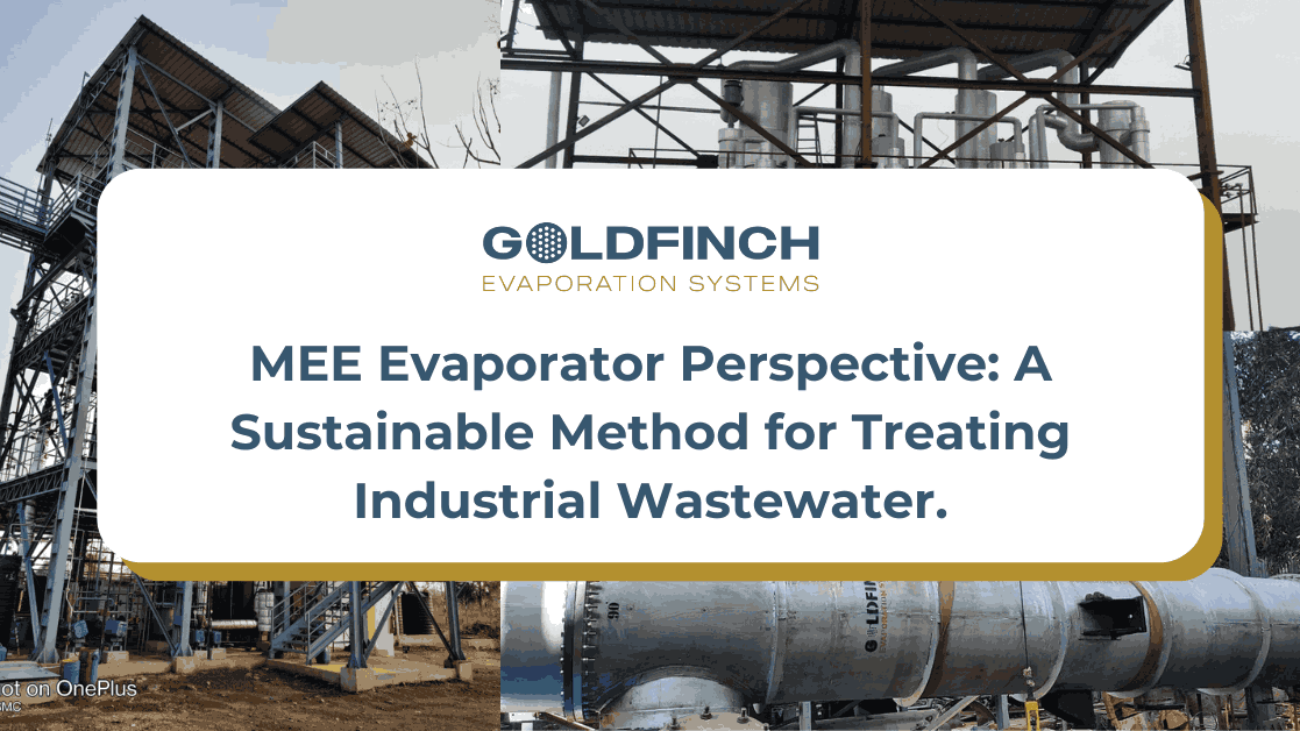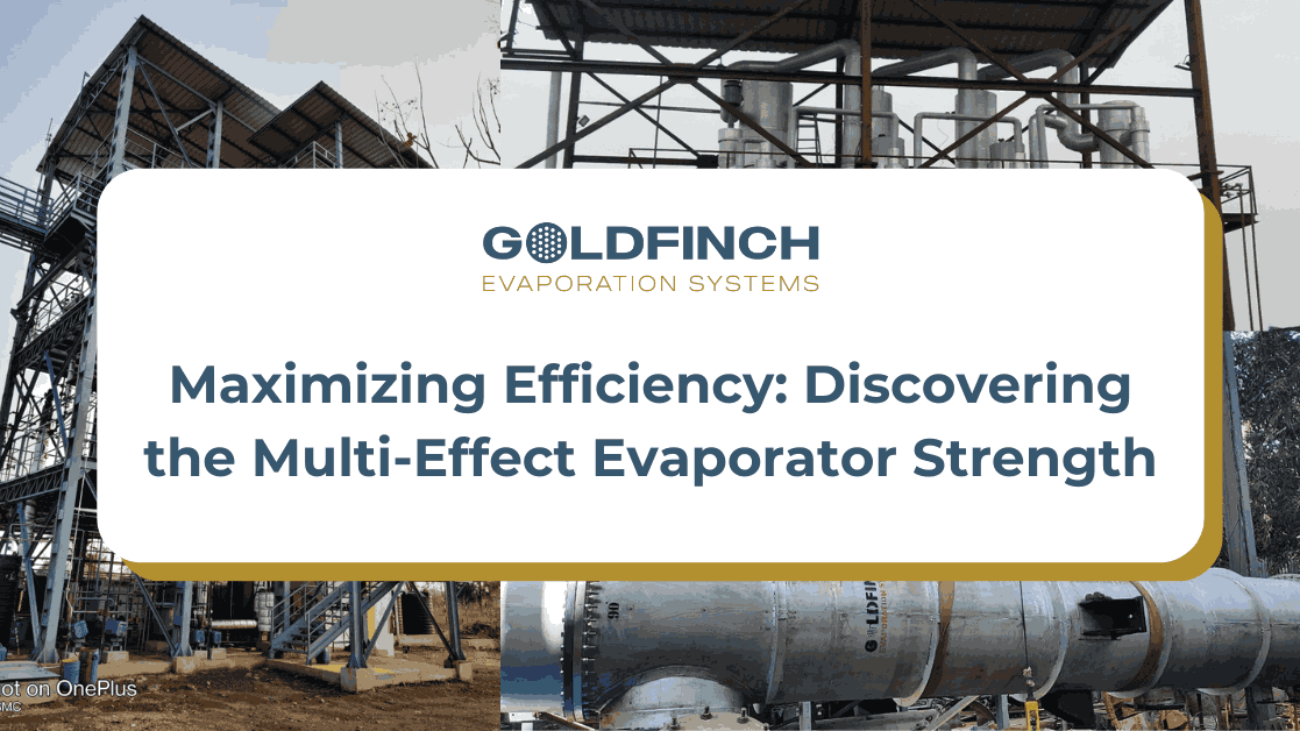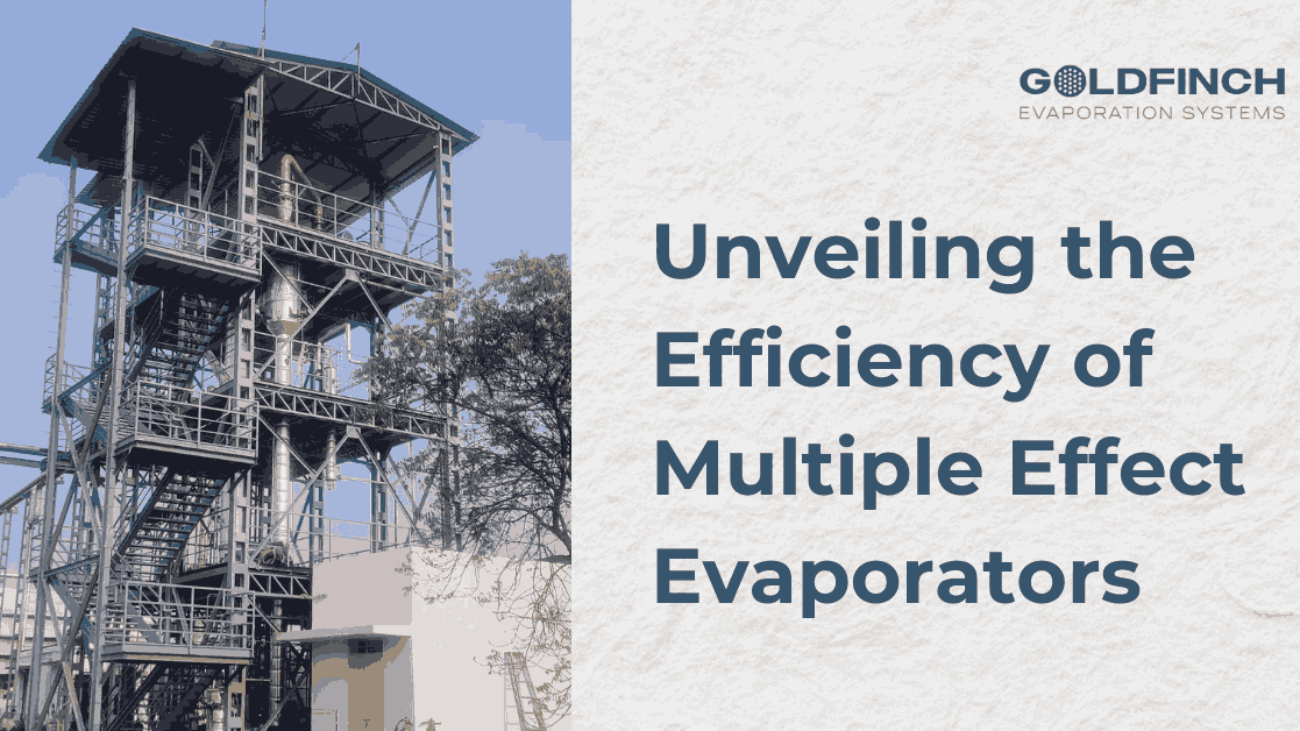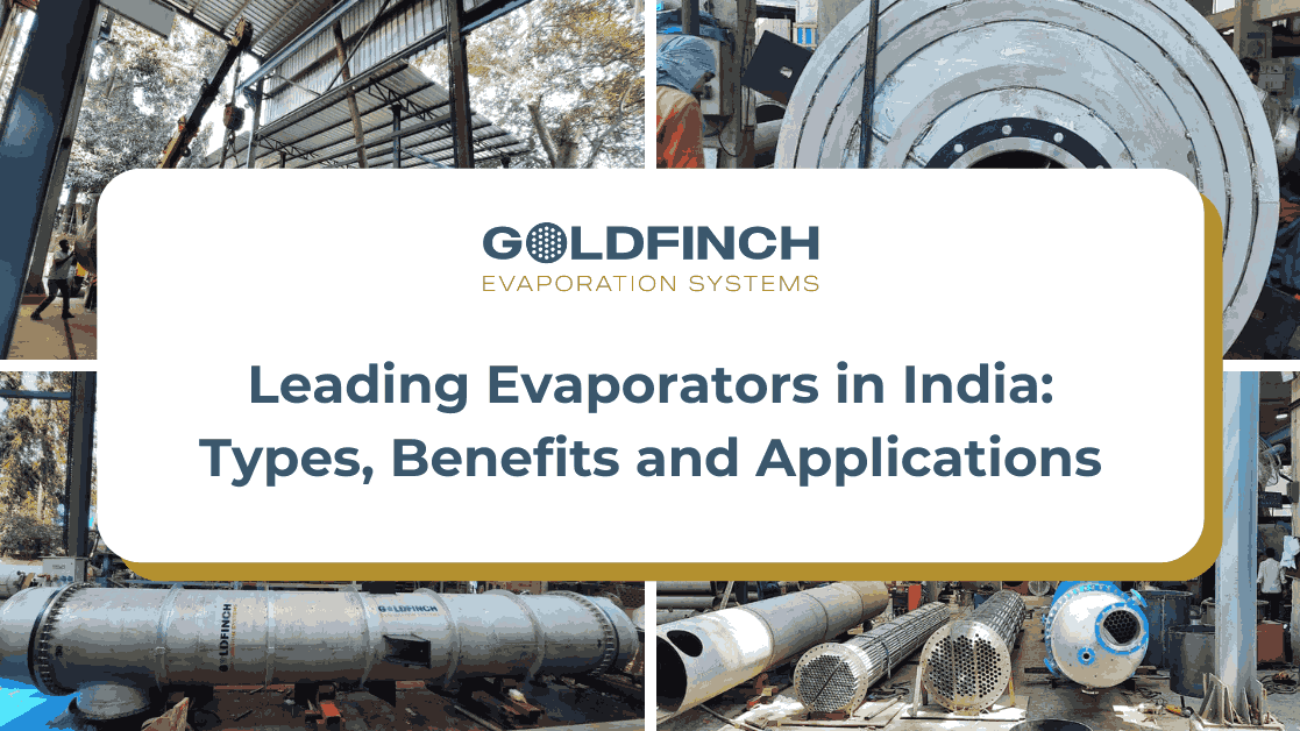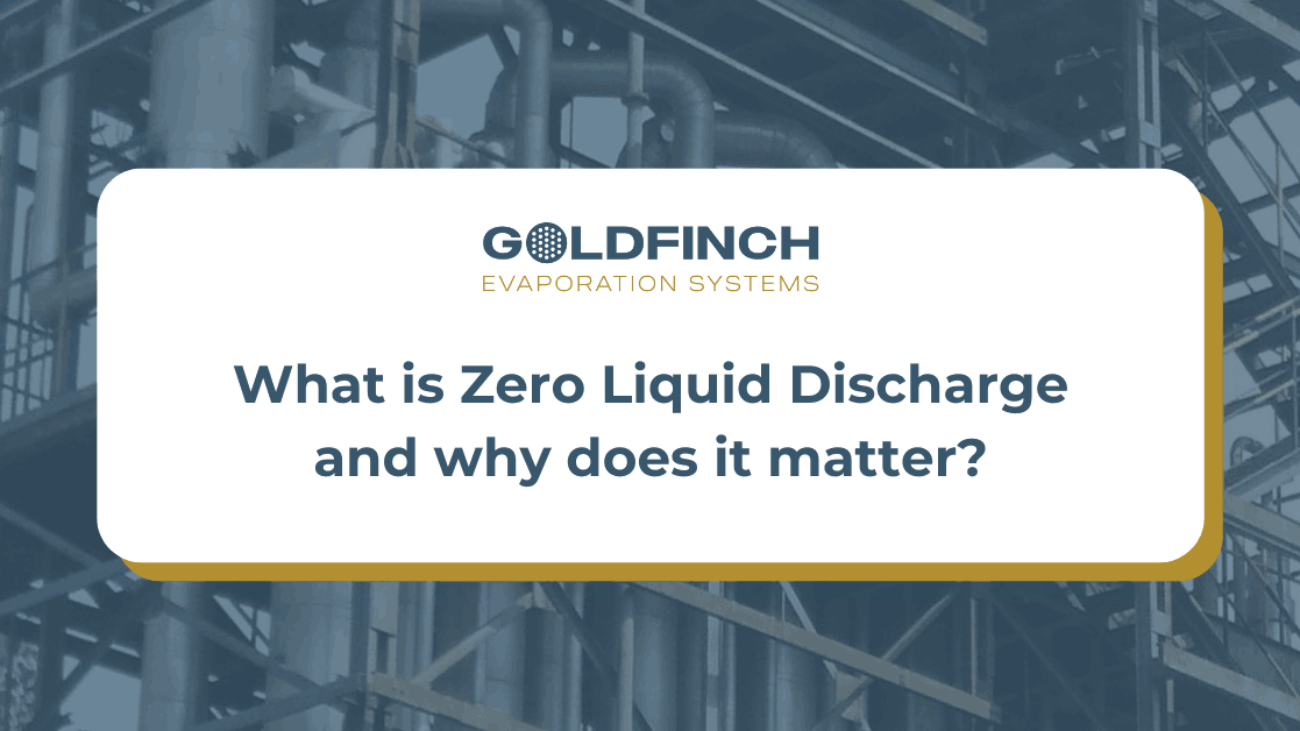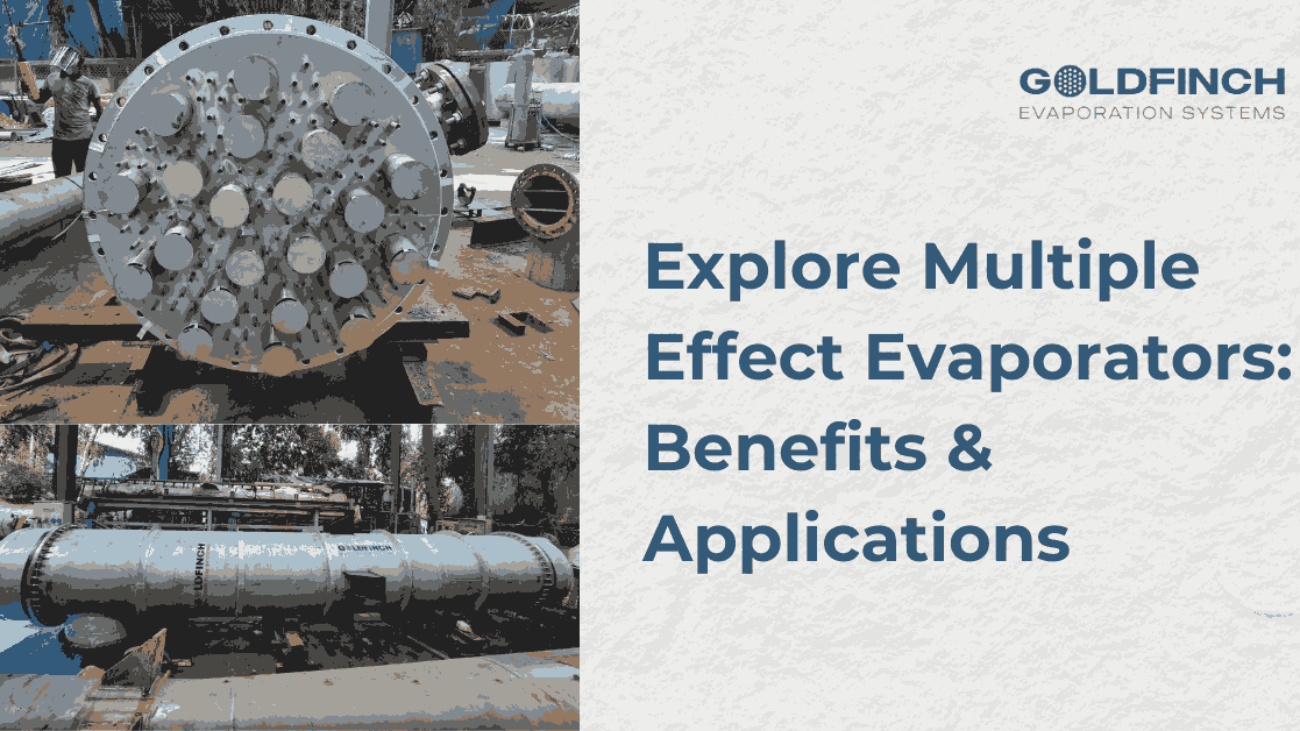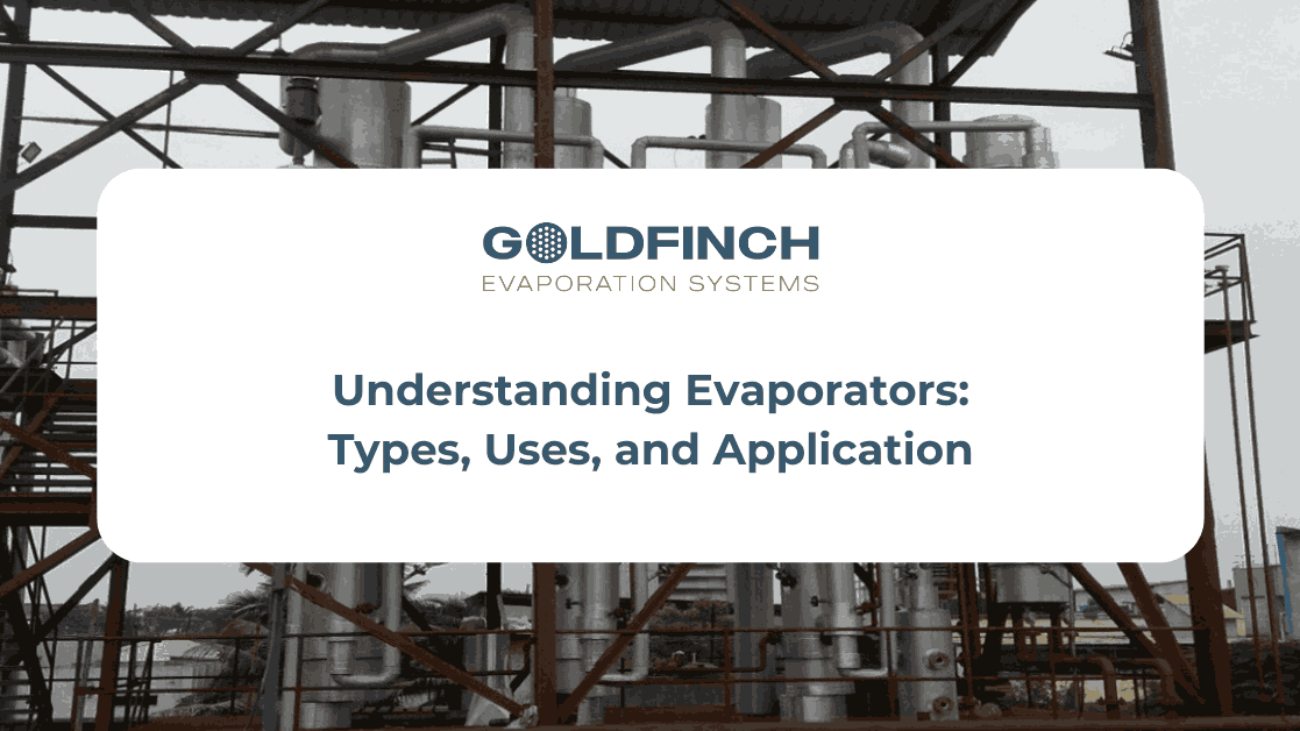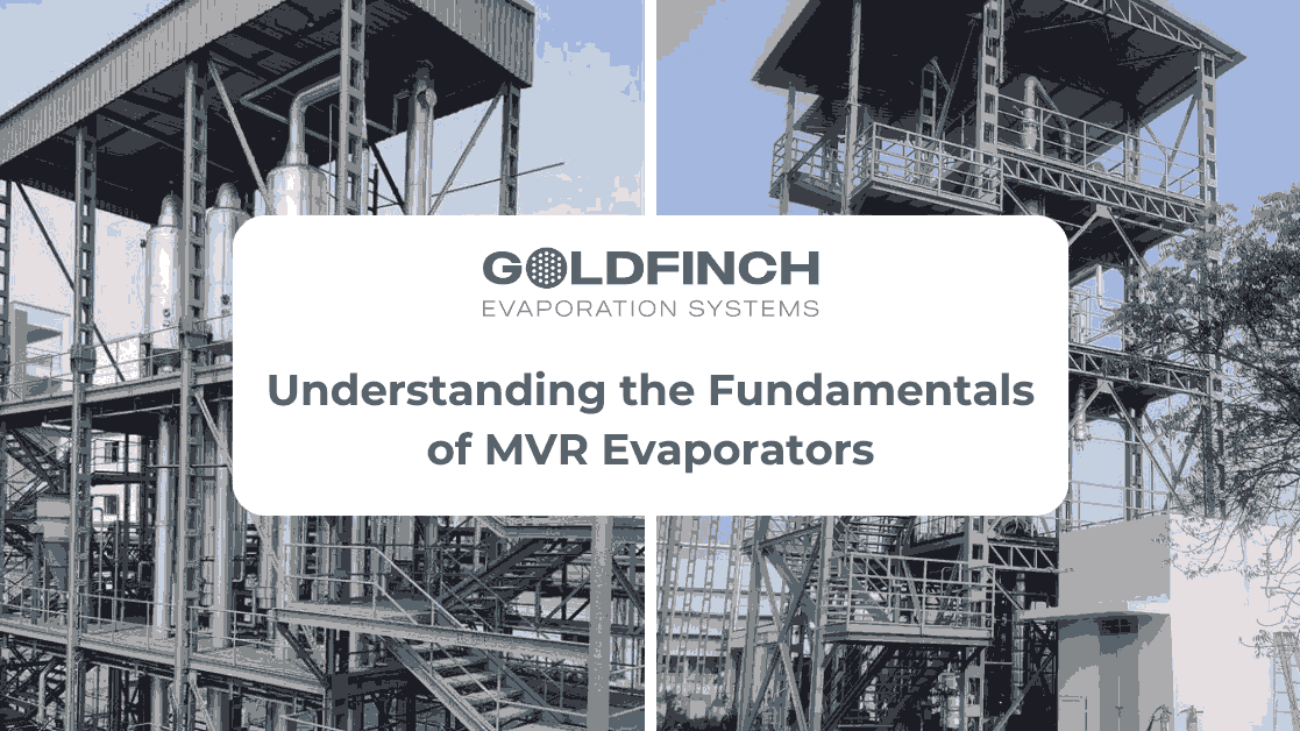The MEE Evaporator works on the basic principle of evaporation, which separates water from contaminants in industrial wastewater.
Maximizing Efficiency: Discovering the Multi-Effect Evaporator Strength
Multi-effect evaporator
In these intensely competitive industrial times, production efficiency coupled with minimal environmental impact is the prime concern among all industries. Multi-effect evaporator (MEEs) have emerged as a fascinating solution offering numerous advantages for industries that are keen on cost efficiency and environmental conservation in their processes. This blog goes deep into MEE working, advantages, applications, and others in the hope of guiding industries toward making well-informed choices.
How Multi-Effect Evaporator Work
A multi-effect evaporator operates using the principle of heat reuse. It comprises multiple stages or “effects,” each using the vapor generated from the previous stage as a heat source. This design significantly reduces energy consumption compared to single-effect evaporators. By capturing and repurposing latent heat, MEEs optimize the evaporation process, making them an energy-efficient solution.
The process begins with the introduction of feed liquid into the first effect, where it is heated and partially evaporated. The vapor generated is then transferred to the next effect, where it serves as the heating medium. This chain reaction continues across all effects, maximizing energy utilization and minimizing waste.
Advantages of Using Multi-Effect Evaporators
1. Energy Efficiency
One of the standout features of MEEs is their ability to conserve energy. By reusing heat across multiple stages, they drastically reduce fuel consumption and operational costs.
2. Cost-Effective Operations
Lower energy requirements translate to significant cost savings. Additionally, MEEs often recover valuable by-products, enhancing their overall economic viability.
3. Among the benefits to ecology,
Their contributions include reduced greenhouse emissions and reduced wastewater released into the environment.
4. High Performance and Scalability
MEEs can handle large volumes of feed material, making them suitable for various industrial applications. The modular design of MEEs also fosters easy scalability.
The application of MEEs ranges across many different fields, including:
Multi-effect evaporators in industrial processes
- Chemical Industry: Concentration of chemical solutions.
- Food and beverages: include concentrated juices and condensed milk.
- Pharmaceutical: sorting through the muck and extracting active ingredients.
- Textiles: Effluent treatment and water recovery.
- Paper and Pulp: Recovery of black liquor.
Factors Influencing the Selection of a Multi-Effect Evaporator
Selecting the right MEE involves evaluating several factors:
- The assessment of capacity requirements involves the survey of feed materials in terms of quantity for the process.
- Energy efficiency analyzes the potential for energy savings.
- Material compatibility ensures that the materials used are corrosion-proof.
- Maintenance needs include an understanding of maintenance requirements over the lifetime.
- Maintenance and Troubleshooting of Multi-Effect Evaporators.
Maintenance and Troubleshooting of Multi-Effect Evaporators
Regular Maintenance Tips
- Cleaning: Periodic cleaning to prevent scaling and fouling.
- Inspection: Routine checks for leaks and wear.
- Calibration: Make sure that temperature and pressure measurements are exact.
Common Troubleshooting Issues
- Reduced Efficiency: Often linked to scaling or fouling.
- Vapor Leakage: Check the seals and gaskets.
- Temperature Fluctuations: Review for obstruction in heat exchangers.
Case Studies: Successful Implementation of Multi-Effect Evaporators
Case Study 1: Food Processing Industry
A leading juice manufacturer implemented MEEs to concentrate fruit extracts, resulting in a 30% reduction in energy costs and improved product quality.
Case Study 2: Chemical Industry
A chemical plant integrated MEEs for effluent treatment, achieving zero liquid discharge and substantial cost savings.
Future Trends and Advancements in Multi-Effect Evaporators
The future of MEEs looks promising with advancements in automation and smart monitoring systems. Integration with IoT technology allows real-time performance tracking and predictive maintenance.
Cost-Effectiveness Analysis of Multi-Effect Evaporators
Despite the relatively higher procurement cost of MEEs, the key point in favor of their cost-effectiveness is the energy and operating cost savings achieved over their lifetime. Further adding economic attractiveness is the possibility of recovering valuable by-products.
Conclusions: Multi-Effect Evaporators-Potential for Industrial Operations: An Overview
Industrial processes that are energy-efficient, cost-effective, and environmentally attuned need multi-effect evaporators. Based on the characteristics mentioned above, companies will strive to enhance their opportunities to apply multi-effect evaporators. Because industries have been shifting towards a greener alternative, MEEs can be defined as paradigm-changing technology combining both economic and environmental benefits.
Unveiling the Efficiency of Multiple Effect Evaporators
Multi-Effect Evaporators MEE
Multi-effect evaporators are integrated systems employed for the effective evaporation of water or solvent from a feed. In these systems, multiple evaporators are incorporated to achieve better energy efficiency to the level that the vapor produced in the first stage is used to heat the subsequent stage. MEEs are widely recognized for their ability to minimize operational costs and optimize energy usage.
What is a Multiple Effect Evaporator?
A Multiple Effect Evaporator involves the structured sequencing of evaporators to remove water from a liquid feed through evaporation. The system leverages the principle of reusing vapor energy from one stage to the next, significantly reducing the need for external energy sources.
Three-Effect Evaporator Design Feed Arrangement
Three-effect evaporators are configured to maximize energy efficiency and accommodate varying feed requirements. The primary feed arrangements include:
- Forward Feed: The liquid flows in the same direction as the vapor, ensuring energy efficiency for feeds that are heat-sensitive.
- Backward Feed: The liquid moves opposite to the vapor flow, which is ideal for concentrated feeds.
- Mixed Feed: A combination of forward and backward feeds for tailored applications.
Applications for Multiple Effect Evaporators
MEEs are employed across various industries for:
Dairy and food processing involves the concentration of milk, juices, and other fluids.
Pharmaceuticals are used for extracting the active ingredients and concentrating solutions.
Chemical processing involves solvent recovery and separation of chemicals.
End treatment of industrial waste becomes volume reduction and recovery of useful materials.
Multiple Effect Evaporators (MEE) for Industrial Wastewater
Industrial wastewater treatment is one of the most critical applications of MEEs. These systems effectively reduce the volume of waste by separating water and contaminants, enabling industries to meet stringent environmental regulations and reduce disposal costs.
Forward Feed Multiple Effect Evaporator
Forward feed systems are ideal for liquids with low boiling points and heat-sensitive properties. The liquid feed enters the first evaporator and flows in the direction of the vapor, ensuring consistent heat transfer and reduced thermal degradation.
Backward Feed Multiple Effect Evaporator
Backward feed systems are designed for highly concentrated or viscous feeds. The liquid moves opposite to the vapor flow, ensuring effective heat transfer and optimal concentration levels.
Forward Feed vs. Backward Feed Arrangement Design
| Feature | Forward Feed | Backward Feed |
| Direction of Flow | Liquid and vapor flow in the same direction. | Liquid and vapor flow in opposite directions. |
| Energy Efficiency | Suitable for heat-sensitive feeds | Ideal for concentrated or viscous feeds. |
| Thermal Efficiency | High | Moderate to high depending on application. |
MEE Evaporator Principle
The principle behind MEE systems is the sequential reuse of vapor energy. By utilizing the vapor from one evaporator to heat the next, MEEs achieve substantial energy savings and operational efficiency.
Considerations for an Optimal Multiple Effect Evaporation Equipment Design
Efficient MEEs are designed with the following considerations:
- Heat Transfer Efficiency: Enhanced by selecting materials with high thermal conductivity.
- Liquid-Vapor Separation: Ensures effective separation to improve product quality.
- Energy Efficiency: Incorporates vapor recompression and advanced control systems.
What is the best multiple-effect evaporator for wastewater treatment?
The best MEE for wastewater treatment depends on factors such as feed composition, required concentration, and energy efficiency needs. Goldfinch’s range of MEEs offers tailored solutions to meet industrial requirements.
Why Use Multiple Effect Evaporators?
MEEs are indispensable for industries aiming to:
- Achieve energy efficiency.
- Reduce waste volume.
- Recover valuable by-products.
- Meet environmental regulations
Energy Savings Using MEE Evaporation System
MEE systems significantly reduce energy consumption by reusing vapor energy across multiple stages. This reduces operational costs and carbon footprints, making them a sustainable choice.
Advantages of Forced Circulation MEE Evaporators
Forced circulation MEEs enhance performance through:
- Improved Heat Transfer: Facilitates the handling of viscous liquids.
- Reduced Fouling: Minimizes scaling and ensures consistent operation.
- High Efficiency: Ideal for feeds with high solid content.
Conclusion: The Future of Evaporation Technology
Goldfinch Evaporators have been at the forefront of MEE technology in India for over four decades. Specializing in innovative vapor recompression solutions, Goldfinch’s MEEs deliver unparalleled efficiency and performance across industries. Explore our compact range of MEEs designed to revolutionize wastewater treatment and industrial processes.
To know More Visit This Link –
Leading Evaporators in India: Types, Benefits and Applications
Evaporators in India
India has transformed itself into a hub for developing advanced evaporator systems and solutions for industrial applications. Leading companies such as Goldfinch Evaporators manufacture efficient and environment-friendly evaporation systems. The following blog discusses the different types of evaporators used, applications thereof, and choosing the right evaporator.
What Are Evaporators?
Evaporators are machines that convert liquids to vapor by adding heat to them. They are now a salient feature of industries like food processing, chemical processing, and waste treatment.
Types of Evaporators
Thin film Evaporators
These types of evaporators are meant just to be used for the heat-sensitive materials. The possible thermal degradation should be at a minimum. Their applications include the pharmaceutical and chemical industries.
Forced Circulation Evaporators
These evaporators are designed for solutions prone to fouling or scaling. They maintain high efficiency even with viscous liquids.
Wiped Film Evaporators
Wiped film evaporators are better suited for evaporating and condensing use in the separation of high boiling mixtures They’re efficient for processing thermally sensitive products.
Agitated thin-film evaporators
Known for handling difficult materials, these evaporators prevent fouling and provide consistent performance.
Multi-Effect Evaporators
Multi-effect evaporators improve energy efficiency by reusing steam. They are widely used in the desalination and food industries.
Which Type of Evaporator is Best?
High-agitation thin-film evaporators are extensively recommended for challenging materials. While tubular evaporators are versatile, they’re less effective for heat-sensitive or viscous liquids.
Examples of Evaporators
- Rotary evaporators
- Natural/forced circulation evaporators
- Falling film evaporators
- Rising film (long tube vertical) evaporators
- Agitated thin-film evaporators
The Principle of Evaporators
Evaporators operate on the principle of heat transfer, where heat energy transforms liquid into vapor. This process is enhanced by surface area, temperature control, and pressure conditions.
Applications of Evaporators
Chemical Industry
Used for concentrating solutions and recovering solvents.
Food Industry
For the production of concentrated products such as condensed milk, fruit juices, and the like.
Pharmaceutical Industry
Facilitates the production of APIs and other formulations.
Lifecycle Wastewater
Removes water content to minimize waste volume.
Renewable Energy
Assists in biofuel production and energy recovery.
Advantages of Falling Film Evaporators
Maximizing Effectiveness: Transfer as much heat as possible to the least possible energy.
Multipurpose: Suitable for various liquids.
Economical: Low operational cost.
Green Technology: Low carbon footprint.
Evaporator Selection Criteria
- Material Properties
- Consider solubility, temperature sensitivity, and viscosity.
- Operational Parameters
- Assess pressure, temperature, and scale deposition tendencies.
- Material of Construction
- Choose corrosion-resistant materials for durability.
Evaporator Manufacturers in India
Goldfinch Evaporators has been a leading manufacturer for over four decades, specializing in multiple-effect evaporation systems and vapor recompression solutions. Their expertise ensures high-quality and efficient systems tailored to diverse industrial needs.
Advantages of Forced Circulation Evaporators
- Handles high-viscosity liquids efficiently.
- Reduces fouling and scaling.
- Enhances heat transfer performance.
Disadvantages of Forced Circulation Evaporators
- Higher initial investment costs.
- Requires careful maintenance.
Conclusion
Evaporators are indispensable in various industries, offering efficient and sustainable solutions for liquid concentration and separation. With advancements in technology, manufacturers like Goldfinch Evaporators continue to lead the way in providing high-quality systems tailored to diverse industrial applications. By understanding the types, benefits, and selection criteria, businesses can make informed decisions to optimize their processes.
To Know More Visit This Blog
https://goldfinchevaporators.com/zero-liquid-discharge-in-india/
https://goldfinchevaporators.com/basic-principles-of-evaporators-overview/
What is Zero Liquid Discharge (ZLD) and why does it matter?
One thing Zero Liquid Discharge (ZLD) stands for is the treatment of water waste. This is so that no liquid waste gets discharged into the environment. It recycles and reuses water, thus contributing positively to environmental sustainability and reducing water pollution. Its mention is important, especially in industries using water intensively, coupled with strict environmental regulations.
Zero Liquid Discharge is Important
ZLD systems are vital for water conservation and protecting the environment. Here are some reasons made by ZLD as essential:
Environmental Protection:
Zero Liquid discharge elimination prevents water pollution.
Prevents harmful contaminants from going into the water bodies.
Water conservation:
Recycle up to 95% of wastewater.
Save freshwater resources.
Compliances with the regulation:
There are strict environmental laws and regulations set to comply.
Avoids penalties that benefit corporate images.
Cost Effectiveness:
Procurement costs of water are resulting in reductions.
Reduced waste disposal cost.
Advantages of Application of Zero Liquid Discharge Systems
Some of these advantages include:
Optimal Utilization of Resources: Maximize all water recovery and reuse.
Better Operational Sustainability: Less environmental impact.
Enhanced Corporate Responsibility:
Show their commitment to sustainability.
Zero Liquid Discharge System Risk
While a maximum or near complete ZLD system has tremendous benefits, it also comes with some drawbacks:
Heavy Capital Outlay: Setup and installation are expensive.
Energy-Intensive Processes: Require a lot of energy to work.
Complex Maintenance: Requires the specialized skill of maintaining.
What is a ZLD System?
A Zero Liquid Discharge System (ZLD) is a specific aspect of water treatment, wherein water is made available from all sources, and all forms of waste are transformed for recovery and reuse. It generally includes the following processes:
Pretreatment: All suspended solids and solids are separated from the fluids.
Evaporation: Concentration of waste using evaporators.
Crystallization: Converts waste to rid it in solid form.
Below are the distinctions between Minimum Liquid Discharge and Zero Liquid Discharge:
Minimum Liquid Discharge (MLD):
It is designed to discharge liquids to the least minimum level possible; less severe than ZLD, but still promotes water conservation.
Zero Liquid Discharge (ZLD):
It will not permit any discharge of liquid.
Makes 100% recovered water.
Zero Liquid Discharge in India
India faces acute water scarcity and stringent environmental norms, making ZLD systems a critical solution for industries. The government actively promotes ZLD adoption in:
Textile Industry
Power Plants
Chemical Manufacturing
Pharmaceutical Sector
Explore Goldfinch ZLD Evaporators
Goldfinch Evaporators has been a leading manufacturer of ZLD systems in India for over four decades. Our innovative vapor recompression solutions cater to diverse industrial applications, ensuring high efficiency and sustainability.
Why Choose Goldfinch ZLD Evaporators?
Compact Design:
Space-efficient systems.
Easy integration with existing setups.
High Efficiency:
Advanced technology for maximum water recovery.
Energy-efficient processes.
Customizable Solutions:
Tailored to specific industry requirements.
Scalable systems for diverse needs.
Related Resources
Zero Liquid Discharge Systems Overview
- A comprehensive guide on ZLD technology
- Detailed insights into system components and processes.
Benefits of ZLD Implementation
- Case studies from various industries.
- Statistical analysis of water savings and cost efficiency.
Challenges in ZLD Adoption
- Exploring common barriers and solutions.
- Strategies to overcome technical and financial constraints.
Conclusion
Zero Liquid Discharge is not just a regulatory necessity but a critical step toward sustainable industrial operations. Industries that implement ZLD systems can save water, decrease environmental impact, and comply with strict standards. Goldfinch Evaporators, with its innovative solutions and decades of expertise, is your trusted partner in achieving zero liquid discharge goals.
Below are some related links – https://goldfinchevaporators.com/zero-liquid-discharge-zld-india/
Understanding Zero Liquid Discharge (ZLD)
What does Zero Liquid Discharge mean?
Zero Liquid Discharge (ZLD) is an advanced system designed to prevent any liquid waste from leaving an industrial facility. Instead, the purified effluent and solid waste disposal form the
the core of such an environmentally-friendly operation towards sustainable industrialization thereby minimizing waste discharge and putting less strain on the natural water resources.
Explanation of ZLD and its Necessity
Essentially, ZLD comprises a collection of processes that make usable water from the effluents of industries. The remaining solids are either reused or safely discarded. This system is more important in water-scarce areas because it involves the conservation of water and reduction in pollution of the environment.
ZLD Systems – Their Purpose
Protecting the environment: It eliminates all the hazardous and polluting liquid waste, thereby destroying water bodies as well as damaging ecosystems.
Water recycling: It is an efficient method through which industries can recycle and reuse water, thereby reducing the amount of freshwater they consume.
Regulatory Compliance: The ZLD has become increasingly necessary to meet very high environmental laws and regulations.
Cost-effective: Although the cost involved is pretty high initially, in the long run, ZLD systems prove cost-effective by recycling water and decreasing waste disposal expenditure.
ZLD Treatment
Usually, the following stages signify the ZLD process:
Pretreatment: Removal of all the largest applications and any contaminants within the wastewater.
Evaporation: Concentration of the waste stream using methods like Multi-Effect Evaporation (MEE) or Mechanical Vapor Recompression (MVR).
Crystallization: Primary salts and some other residuals become solidified for disposal or reuse.
Condensation: Purified water is put back into use in the industrial system.
Classification of ZLD Evaporators
Goldfinch Evaporators is specialized in ZLD systems, a few of which include:
Multiple Effect Evaporators (MEE): Makes use of multiple stages to increase energy efficiency.
Mechanical Vapor Recompression Evaporators (MVR): Recycle the vapor through compression for maximization of energy savings.
Thermal Vapor Recompression Evaporators (TVR): It is a combination of mechanical and thermal processes for maximum efficiency.
How Does a ZLD Treatment System Work?
Characteristically, ZLD Treatment Systems treat waste streams by these methods: Filtration, Evaporation, and Crystallization. The process recycles purified water separately from solid waste and achieves zero liquid waste discharge for sustainable industrial operations.
Primary Components of Basic ZLD Treatment System
Filtration Units: Primary treatment of wastewater.
Evaporators: Concentration of waste streams.
Crystallizers: Dissolved substances are converted into solids.
Condensers: Recoverance of clean water for reuse.
Application of Zero Liquid Discharge in Industries
ZLD is primarily applicable to industries like power generation, chemicals, textiles, and others. Such industries, having a high volume of wastewater, recover resources and act on the global sustainability agenda.
ZLD Regulations and Guidelines in India
Zero liquid discharge is a compulsory mandate in many water-scarce regions, particularly for highly polluted effluents. Hence, the state has put in place provisions to enforce strict compliance by all facilities to encourage sustainability in these industries.
Advantages of Goldfinch ZLD Evaporators
Goldfinch Evaporators is one of the most reputed manufacturers of ZLD systems in India and offers:
Compact Designs: Space-efficient industrial solutions tailored to the industry’s needs.
Innovative Technology: Cutting-edge vapor recompression technology.
Experience: Over 40 years of involvement in the manufacture of evaporators.
Custom Solutions: Systems designed to meet the specific requirements of the industry.
Why Choose Goldfinch Evaporators?
Goldfinch Evaporators specializes in sustainable solutions for the management of industrial wastewater. The said ZLD systems are designed and ensured to perform well-permitting compliance with the environmental standards as well as improved efficiency in usage.
Conclusion
Zero Liquid Discharge is a significant step toward more sustainable water management in enterprises. Through the implementation of ZLD systems, companies could help less impact on the environment, maintain regulations, and better use of resources. Goldfinch Evaporators happens to be ahead in the industry when it comes to innovation and efficiency, making them the smart choice for ZLD systems in India and beyond. Adopt ZLD today for a better tomorrow and a sustainable future.
To Know More Visit This Link – https://goldfinchevaporators.com/zero-liquid-discharge-zld/
Explore Multiple Effect Evaporators: Benefits & Applications
Goldfinch Evaporators is an innovator in offering ingenious designs of MEE systems that promise the best to its clients as far as the performance of MEE systems in different industrial applications is concerned. Goldfinch Evaporators has been at the forefront for over forty years in the field of MEE technology.
Understanding Evaporators: Types, Uses, and Applications
The evaporator is one of the important parts in the production process in industries to convert the liquid into vapor by heating it.
Understanding the Fundamentals of MVR Evaporator
MVR Evaporator
Mechanical Vapor Recompression (MVR) Evaporators are critical components in industrial processes, particularly in wastewater treatment and resource recovery. Their capacity to reduce energy consumption while increasing efficiency makes them indispensable in a variety of applications. In this article, we will look at the concepts of MVR evaporators, their components, and industrial uses. We’ll also discuss why Goldfinch Evaporators is the top source of all MVR evaporator solutions.
MVR Evaporator is what?
It is a Salient Mechanical Vapor Recompression (MVR) evaporator that serves to recover and utilize energy during the evaporation process. MVR does not differ from conventional evaporators in that their evaporating vapor is compressed to make it reusable for heating. These, drastically reduce energy consumption and operating costs, making MVR technology environmentally friendlier for processes-it is in the industrial processes.
The Science behind MVR Evaporation
Working of MVR Evaporators:
A simplified explanation of MVR Evaporation is:
Preparation for Evaporation: Liquid feed converted into vapor upon heating.
Compression of this vapor: Increase in pressure and temperature through a compressor.
Conduct Heat: The compressed vapor is directed against the liquid feed for vapor generation.
Condenser: Once the remainder of the vapor condenses, the heat released may be taken back into the circuit.
This cycle works with a minimum wastage of energy and at full capacity
Key Components of MVR Evaporator
Several critical components make up MVR evaporators and function together seamlessly:
Compressor: Increases the vapor’s pressure and temperature.
Heat exchanger: Transfers heat from the vapor to the liquid input.
Evaporation Chamber: Facilitates the phase transition of the feed liquid into vapor.
Condensate System: collects and processes condensed vapor.
All are crucial in achieving efficiency and reliability.
Types of Evaporators: Where MVR Stands Out
Understanding different evaporator types helps appreciate the unique benefits of MVR systems:
- Falling Film Evaporators: Ideal for heat-sensitive materials, but less energy-efficient than MVR.
- Rising Film Evaporators: Effective for high-viscosity liquids but limited in scalability.
- Forced Circulation Evaporators: Suitable for challenging liquids, but energy-intensive.
- Plate Evaporators: Compact but not as versatile as MVR.
MVR evaporators excel in energy efficiency, environmental sustainability, and versatility across industries.
Industrial Applications of MVR Evaporators
MVR evaporators find applications in diverse industries, including:
Water Treatment: Recycling and purifying wastewater.
Food and Beverage: Concentrating juices and dairy products.
Chemical Processing: Recovery of solvents and waste reduction.
Their ability to handle large volumes with minimal energy consumption makes them a preferred choice.
MVR Evaporators in Water Treatment
One of the most prominent applications of MVR evaporators is in wastewater treatment. By removing water from waste streams, MVR systems reduce the volume of waste, lower disposal costs, and enable resource recovery. This is particularly beneficial in industries aiming for zero liquid discharge (ZLD) compliance.
Benefits of Using MVR Evaporators
Adopting MVR evaporators offers numerous advantages:
Energy Efficiency: Cuts down energy consumption by 90% compared to conventional systems.
Cost Effective: Decreases operational and maintenance costs.
Effect on Environment: Reduction of carbon footprints and contribution to sustainability.
Reliability: Constant performance under harsh conditions.
Why Choose Goldfinch Evaporators?
Goldfinch is a leader in MVR evaporator technology, providing tailored solutions to meet industry-specific needs. Here is what makes Goldfinch stand apart:
A to Z Services: Design, manufacture, install, and maintain.
Professionalism: Decades of behind evaporator technology experience.
Personalization: Solutions designed according to your operations.
Innovation: Cutting-edge technology and sustainable practices.
How Goldfinch Satisfies the Requirements of Industries
MVR evaporators designed by Goldfinch are powerfully efficient and last a lot longer. The company manages systems entirely. So, whether it is an installation or upgrading of old systems
assures a maximized result through Goldfinch’s expertise.
Understanding the Full Form of MVR
MVR stands for Mechanical Vapor Recompression. The term highlights the core function of these systems: compressing and reusing vapor to save energy and improve efficiency.
Key Focus Areas for Optimization
To get the best out of your MVR evaporator, focus on:
- Regular Maintenance: Ensuring all components are functioning optimally.
- Process Monitoring: Using advanced sensors and control systems.
- Energy Management: Analyzing and minimizing energy usage.
Conclusion: Investing in the Future with Goldfinch
MVR evaporators represent the future of sustainable industrial processes. Indeed, through this investment, cost savings, decreased external effects, and increased efficiency in the process are achieved. In this journey, Goldfinch Evaporators is your ultimate partner in offering expert solutions.
Adopt the MVR evaporators and let Goldfinch convert your operations into the greatest efficiencies in terms of sustainability and profitability.
Evaporators in Brief Overview: The Basic Knowledge
Evaporators Overview in India
Evaporators Overview are critical in industries ranging from food processing to wastewater treatment. This blog provides an overview of evaporators, their types, components, and applications, along with details about efficiency and importance.
What is Evaporator?
An evaporator is a machine that converts liquid to vapor. The liquid is heated until it evaporates, resulting in concentrated leftovers. Such systems are very important in industries that require separation of water or solvents from solutions.
The Science of Evaporation
Evaporation involves the energy uptake by liquid molecules until they have enough energy to change into vapor. Evaporators harness this natural process to achieve industrial objectives efficiently. They use external heat sources, mechanical processes, or both to enhance evaporation.
Key Components of an Evaporator
Heat Exchanger: Transfers heat to the liquid, initiating evaporation.
Separator: Separates the vapor from the liquid concentrate.
Condenser: Converts vapor back to liquid for further use.
Feed System: Supplies the liquid to the evaporator consistently.
Types of Evaporators
Evaporators come in various designs to suit specific industrial needs. Here are the primary types:
Falling Film Evaporators: Allow liquid to flow down the inner walls of heated tubes.
Rising Film Evaporators: Utilize boiling action to create upward liquid movement.
Forced Circulation Evaporators: Rely on pumps to circulate liquid through the heating area.
Plate Evaporators: Compact designs ideal for limited spaces.
MVR (Mechanical Vapor Recompression) Evaporators: These form mechanical energy to recompress vapor and use it all over again.
Multi-Effect Evaporators (MEE): These types of evaporators are used for higher efficiency, working in several stages of evaporation in a single evaporator.
What is a Multiple Effect Evaporator (MEE)?
A multiple-effect evaporator (MEE) contains a battery of vessels such that the vapor of one stage acts as a heat source for any downstream stage. Thus, it minimizes energy consumption and maximizes efficiency. MEEs are used widely in:
Industrial Wastewater Treatment for Volume Reduction.
Food and Beverage Industry for concentrating juices, syrups, and dairy products.
Chemical Industry for precise processing of chemicals.
Pharmaceutical Industry for maintaining the purity of drug formulations.
Advantages of Multiple Effect Evaporators
Energy Efficiency: Reduced energy consumption through vapor reuse.
Cost Savings: Minimized operational costs.
Flexibility: Available for production to meet various needs.
Environmental Friendly: Reduced carbon footprints with resources conserved.
Design Feed Arrangements in Three-Effect Evaporators
Three-effect evaporators can operate with different feed arrangements:
- Forward Feed: Liquid flows in the same direction as the vapor.
- Backward Feed: Liquid flows opposite to the vapor direction for energy savings.
- Mixed Feed: Combines forward and backward feed mechanisms
Applications of Evaporators
Evaporators find applications across diverse industries due to their versatility:
Food and Beverage Industry: Concentrating flavors and removing water.
Chemical Industry: Purifying chemicals and solvents.
Pharmaceutical Industry: Producing high-purity solutions.
Environmental Applications: Waste treatment and lessening of environmental footprints.
Refrigeration and Air Conditioning: Heat exchange operation in cooling systems.
Efficiency improvement in thermal power generating plants.
The Role of Evaporator Condensers
Condensers are integral to evaporators, aiding in the conversion of vapor back to liquid. They:
- Enhance system efficiency.
- Reduce heat loss.
- Optimize resource utilization.
Types of evaporator condensation devices.
- Condensers that rely on air: They catch air for cooling, with a vapor condensed.
- Condensers that rely on water: Release their water vapor condensational.
- Evaporative Condensers: Combine air and water to cool quickly.
The Efficiency of Evaporators
Efficiency in evaporators depends on design, operating conditions, and maintenance. Key factors include:
- Energy Utilization: Effective use of heat and vapor.
- System Maintenance: Regular cleaning and inspections.
- Optimal Configuration: Tailored designs for specific needs.
The Way Forward
As industries grow, the demand for efficient and sustainable evaporators increases. Innovations like MVR technology and advanced materials are paving the way for more effective solutions.
Conclusion
Evaporators are indispensable tools across various industries, from food processing to environmental protection. Businesses can optimize their operations and achieve sustainable growth by understanding their types, components, and applications. Companies like Goldfinch Evaporators provide top-tier evaporator solutions, ensuring efficiency and reliability for diverse industrial needs.

